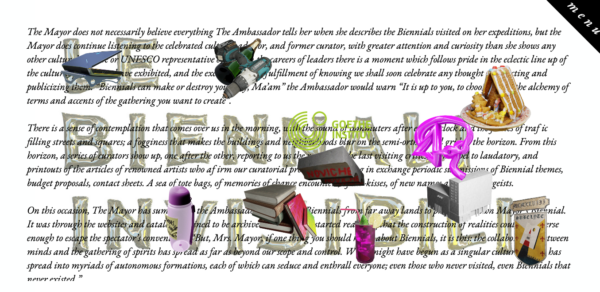Wie wird deutschsprachige Literatur eigentlich im Ausland aufgenommen? CULTurMAG wirft einen ungewöhnlichen Blick auf aktuelle Neuerscheinungen. Lucy Renner Jones übersetzt (u.a.) deutschsprachige Literatur ins Englische – und klopft für uns in unregelmäßigen Abständen Neuerscheinungen interessanter Autoren auf Ihre Aussichten auf dem englischsprachigen Markt ab. Diesmal hat Sie Clemens J. Setz‘ Roman „Indigo“ gelesen und sich mit Ross Benjamin, dem amerikanischen Übersetzer des jungen österreichischen Autors unterhalten.
 That rare thing
That rare thing
– “So könnte die Zusammenfassung einer Handlung lauten, die sich jeder Zusammenfassung entzieht. Am besten, Sie blättern gleich um und lesen das Buch. Sie werden feststellen: Auch im neuen Roman von Clemens J. Setz geht das „radikale Gegenprogramm zur hübsch verkasteten Literaturwerkstättenliteratur“ (Die Welt) weiter. Rasend spannend und so erholsam wir eine gute Massage. Hinterher spüren Sie jeden Muskel.“
The first thing you stumble on when you open Indigo is the plot summary. Being familiar with Setz’s brilliant volume of short stories, Die Liebe zur Zeit des Mahlstädter Kindes, I’d say this isn’t a bad example of what makes reading Setz such a gratifying experience: his take on the publishing world and what it expects of him, his take on readers’ expectations – we want to be entertained and soothed, reading should be like having a good massage – played out in jargon from the advertising industry. Words, put in a new context, that seem quietly unsettling. Setz’s semi-fake biography that follows interweaves real biographical facts with the plot of Indigo, a novel in which the main character is a mathematics teacher called Clemens J. Setz. Come on, Setz the writer seems to be saying, this is fiction. I get to play here.
For those who haven’t read Indigo, it does have a plot that goes something like this: in a world set in the not-so-distant future, children are born with the Indigo syndrome, an illness that leaves the sufferers unaffected but afflicts those who come within close range to the victims with nausea, vertigo, and terrible headaches. The mothers are the first to be affected. The result is that families break up. Some of the children affected are sent to the Helianau Institute where they receive dubious treatment by Dr. Rudolph and his staff. Clemens J. Setz, a maths teacher who applies to the Institute for an internship, becomes aware of certain strange goings-on and starts to investigate. He gets embroiled in the dealings of the shady institute, ultimately having to deal with violent, physical attacks, among other things.
But all this is – almost – incidental. Indigo acts as a vehicle for Setz’s assortment of slightly geeky facts, a collection, as Setz’s American translator Ross Benjamin puts it, of “unusual anecdotes, neglected footnotes to historical events, cultural and pop marginalia, which he incorporates into his fiction as well as his public appearances and interviews.” Not only does this technique attempt “to do justice to the mushrooming information environment of contemporary life”, but it is also an “expansive sense of what literature can be and what can be literature.”
This does sum up rather elegantly at least one reason why anyone should grab Indigo and start reading. It is a challenge to keep up with what exactly is going on in this multilayered novel, whether Setz has chosen a metaphor for the way illness is secluded from society, is criticizing our treatment and responsibilities towards children, or, in Benjamin’s words, is reflecting on “a simple incapacity to get a complete handle on things that profoundly and uncontrollably destabilize our world.” Being a translator, Benjamin has clearly read his texts very closely and delights in the intertextuality of his writing, pointing out that Setz’s talent as a jazz pianist has perhaps made it possible for him move between narratives, doing more than one linear thing at a time, and yet giving the reader the confidence that he has the structural reins firmly in his hands.
Not that Indigo lacks pace. At times, you are deeply embroiled in the finer, nerdier details of Star Trek characters, and depending on your predilections, this may or may not do it for you. But at other times, the plot is downright gripping. Uncanny, as several characters say, in English. This is arguably one of the central concepts going on in Indigo: “the uncanny valley”. It comes up in one of a few conversations between characters and refers to “a hypothesis in robotics (…) When replicas of humans look and act almost, but not perfectly, like actual human beings, it causes a sense of revulsion among human observers.” (Wikipedia).
This is not the first time that I had the feeling while reading Indigo that I was being sent off to look something up on the internet. And that the result, when I found it, was both relevant to the characters, and relevant to my solving some mystery in Setz’s plot, but not in any obvious way. The internet, in my view, acts for Setz as a fourth wall, “a game he is playing between author and reader, internet and book,” as Benjamin says. As some general facts are cast in doubt – the world Indigo is set in has many parallels to our world but remains largely eerie and slightly off-key – so can other unusual theories have sudden prominence, even take up several pages or chapters of discussion. He eggs readers on to google certain words, giving them actual terms to look up, to question stories that you have no reason to suppose are not true. On looking up one story he quotes, I realised that he had interwoven the text you find at the top of google hits with his own make-believe.
In other words, Indigo’s arrangement is as much a comment on literature and communication as on illness, children, therapy or institutions that deal with all three. It is pretty unique. In fact, I’d go as far to say as there’s nothing to compare to Clemens J. Setz. In the words of Ross Benjamin, “He’s that rare thing, an original.”
Below are a few of the questions and short versions of the answers Ross Benjamin gave to my questions about Indigo. (For the full text of Benjamin’s answers and some fascinating insights into Setz’s writing, go to transfiction.eu).
LRJ: All along, the book has a feel that something terrible is about to happen (or has already done so), and that Setz is pulling you along to the inexorable conclusion. Did you feel the atmosphere was uncanny, to use one of Setz’s own words?
RB: Specifically, Setz invokes the “uncanny valley” concept, another of those moments when he can presume many readers will stop and Google or Wikipedia the term. In a more traditionally intertextual way, this goes back to Freud’s essay “Das Unheimliche,” about the uncanny effect of things like dolls, doppelgängers, puppets, which lend the familiar an unsettling quality of strangeness. […] In the novel, characters talk about [the uncanny valley] in terms of Data from Star Trek, a human actor altered with make-up to look like robot, and in terms of digital animation, which goes in the other direction, starting from pixels and ending up with something eerily humanlike but still not 100% human. All this seems highly relevant to Setz’s technique in the novel. […] Such tiny estrangements are the very definition of the uncanny. And, of course, we are reading about a character with the author’s name and biographical background living in this parallel universe. It is him but not him, or a version of the “real” him having fictitious experiences – again, similar but not identical. All that, for me, is where the creepy effect comes from. […]
LRJ: What’s with the character named after him? How are we supposed to understand that? Is it a Paul-Auster-type of device or is something else going on?
RB: […] These days, readers have been trained by critics not to conflate a fictitious character with the author, which leads to a funny reaction when novelists include characters with their names in novels […] But then why do they share a name? I’ve seen Setz express (and perhaps play up as another aspect of self-staging) in interviews his discomfort calling the Clemens Setz character “he” and his preference for saying “I,” although he will then often end up reverting to “he” anyway. […] I’d go out on a limb and say we are supposed to take it pretty much at face-value here that the character named Clemens Setz is Clemens Setz, is invested with his personality, life experience and responses to the world. It’s a version of himself projected into a fictional world. […] We can let the character be Clemens Setz and Clemens Setz be the character if that’s who the novel says he is. Can’t someone living in the real world also live in literature? Indigo shows that those borders can be porous. We don’t need to police them so strictly. How can we prove the Clemens Setz in the novel is not Clemens Setz? Ask him for his papers? […]
What does the novel tell us about our attitude to illness and isolating the sick?
[…] I’m not sure whether the central point of this novel is to say something about our attitude to illness, although it might be considered something of a cop-out for a novel that’s all about a mysterious illness to say nothing whatsoever about that theme. And of course people’s attitudes and reactions to illness drive much of the story. (It also seems to me to target social attitudes toward impairment, disability and mental illness, and does so with a particular edge in depicting the pedagogical and therapeutic sphere.) And yet I wonder whether it doesn’t say as much about our attitudes to anything we can’t understand, explain, master or control, to what we’ve been calling the uncanny, the strange and creepy and slippery and elusive. […] It’s in some ways a novel about the limits of our ability to absorb such shocks as individuals and as a society. The notion that the novel seems to me to be pointing to, though, is that it doesn’t have to be a sudden inexplicable epidemic. People can react that way to life’s everyday strains and struggles, such as having children – and, of course, our relationship to, treatment of and responsibilities toward children are equally key themes of the novel. […] It seems to me more an exploration of our all-too-human responses to overwhelming experiences – which include revulsion and anxiety, pain and incomprehension, as well as a potential for compassion, empathy and benevolence, though that too, we see in the novel, can be perverted.
Lucy Renner Jones
Lucy Renner Jones ist eine freiberufliche Autorin und Übersetzerin von Texten ins Englische, hauptsächlich aus den Bereichen Kunst, Fotografie, Film und Literatur. Zur Homepage.
Clemens J. Setz: Indigo. Suhrkamp 2012. 479 Seiten. 22,95 Euro.











